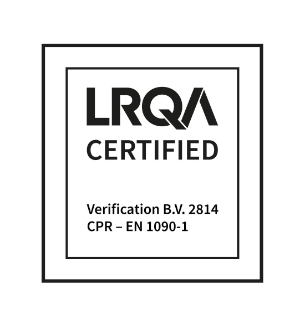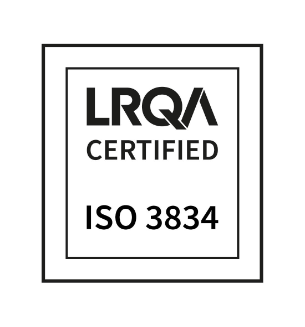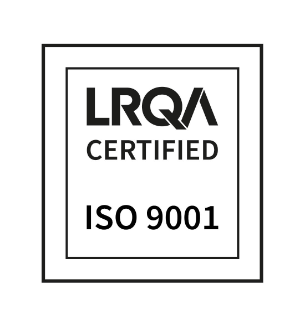Knowledge centre
6. Laser cutting
Laser cutting is thermal process in which a focused laser beam is used for strong localised heating of the material. Using a coaxial gas flow, the molten material is blown out of the cutting groove, which creates a nice, straight cut. The gas jet also ensures that the cut edges oxidise less.
The shape of the cut is created by the laser and gas jet moving relative to the sheet material. The is done with the aid of CNC control. The process is controlled with a CAD-CAM coupling. Kepser uses WiCAM for this.
Among others, Kepser has a 5 kW CO2 laser from Trumpf (L3050). This machine has a ‘flying optics’ system, which means that the sheet remains stationary while the laser beam is moved over it assisted by mirrors and the cutting head Fig. 6.1. Oxygen or nitrogen is used as a shield gas. The maximum sheet dimensions are 3000 x 1500 mm (for stainless steel with sheet thicknesses of up to and including 20 mm, for steel with sheet thicknesses of up to and including 25 mm).
Some advantages of laser cutting
- Straight, burr-free cut. (Fig. 6.2)
- High cutting speeds.
- Narrow cutting gap.
- Cuts with a smooth surface (the thinner, the smoother).
- Free contours.
- Accurate
- Fast switching to another product.
- Contactless machining.
- Hardly any thermal influencing of the product.
The quality of the product to be cut also depends on the condition in which the input material is supplied. Rusty, sand-blasted, shot-blasted and painted sheets have a negative impact on the result, while pickled and oiled parts have a favourable impact. See also chapter 2 Sheet material. Sheets are automatically laid in place by the liftmaster. Fig. 6.3
Depending on the type of material, sheet thickness and post-processing, either nitrogen or oxygen is selected as the cutting gas. In the case of steel that is cut with oxygen, a layer of oxide is produced on the cutting edge. If powder coating is required, this layer is unwanted, so nitrogen is the designated gas. Stainless steel is always cut using nitrogen.
Minimum hole diameters
The contour type to be chosen depends on the dimensions of the hole as well as the cutting speed and the achievability of the quality. Fig. 6.4 The table below shows the minimum cutting diameters of holes.
|
Minimum hole diameters for laser cutting: Trumpf L3050, 5 kW |
||||||||||||||
|---|---|---|---|---|---|---|---|---|---|---|---|---|---|---|
| Sheet thickness (mm) | 1 | 1.5 | 2 | 2.5 | 3 | 4 | 5 | 6 | 8 | 10 | 12 | 15 | 20 | 25 |
| Steel (mm) | 1 | 1.7 | 1 | 1.3 | 1.5 | 2 | 2.5 | 2.4 | 3.2 | 4 | 4.8 | 8 | 12 | 40 |
| Stainless steel (mm) | 1 | 1.5 | 1 | 1.3 | 1.5 | 2 | 2.5 | 3 | 4 | 5 | 7.5 | 9 | 18 | |
There are holes whose diameter has to be smaller than shown above. The position of the hole can be indicated by engraving it. Of course, this only makes sense for round products. Rectangular products are laid on the automatic centre punch Fig. 6.5 to position the holes. In this case, there is no need to engrave a centre point.
There is no minimum distance between holes. It is possible to allow holes to overlap. Fig. 6.6
It is not possible to program a recurring blind edge for perforated sheet. This is due to the perforation pattern. Because special consideration has to be given to nesting and cutting, aligning becomes too expensive.
Cutting diameter of the laser beam
To cut a narrow opening, the laser does not make a peripheral contour, but a single track. The width of the cut opening depends on the diameter of the laser beam. This varies per sheet thickness and type of cut. To give an impression of the sizes, the largest and smallest diameters, and the cutting gap that depends on them, are shown below.
|
Material |
Smallest diameter | Largest diameter |
|---|---|---|
| Steel | 0,15 bij 1 mm sheet thickness | 0,7 bij 25 mm sheet thickness |
| Stainless steel | 0,2 bij 1 mm sheet thickness | 0,3 bij 15 mm sheet thickness |
Because the diameter of the laser beam is variable, a correction factor can be set. This makes it possible, in the case of internal and external contours, to let not the centre but the edge of the laser beam follow the intended line.
In the case of a single cut, the centre of the beam follows the drawn line. Fig. 6.7
Accuracy
The Trumpf laser guarantees a positioning accuracy of +/ 0.1 mm.
Because the bundle diverges (dilates) as it burns into the material, the cutting edge of a laser cut product is not exactly square.
Finishing
Laser-cut products are supplied burr-free as standard.
- Bear in mind that laser-cut • products have sharp edges.
- Do you want to have the edges broken? Then mention this on the drawaing. Fig. 6.8
Laser cutting
- When drawing holes, think beyond just round ones. A hexagonal hole, for example, prevents the blind rivet nut from spinning. Fig. 6.9
- For the laser, the shape of the hole makes little difference. See chapter 11 for more information about deviated holes.
- The use of so-called Microjoint joints (in which a product remains connected to the residual material by a small part that is not be cut) offers the following advantages:
- The possibility to fix small parts.
- Preventing products from ‘falling through’.
- The possibility to fix to the table long, narrow parts that can distort due to the application of heat.
- The possibility to lift products off the table in a single movement.
Although a Microjoint joint causes a small burr on the contour, no post-processing is generally required.
- Indicate texts that have to be engraved in yellow in the drawing program. Fig. 6.10
- Drawing closed contours. The laser cuts the open contours before the closed contours.
- The laser automatically rounds off sharp corners. Inform the laser programmer if this is not required. The size of the radius is between 0.5 and 3 mm depending on the material thickness, contour type, type of gas and type of material. Fig. 6.11
- The thickness of a bulb plate is made up of the sheet thickness plus the height of the bulb. This total thickness is used for programming the bulb plate. Also, draw the product with this sheet thickness. The bulb points down during cutting. Take this into account during construction.
- Engraving sheet metal parts can simplify subsequent machining. Consider engraving setting lines for products that are difficult to edge. Fig. 6.12
- The same products are often used for several applications. For example, a switch cabinet in which different components can be placed. Depending on the components in the switch cabinet, a number of openings are required. In this case, push out sheet metal parts by hand. The laser leaves little tabs that hold the slug inside the hole. The slug can be pushed out by hand. Fig. 6.13
- Build up a round shape from circular arcs instead of short line segments.
- For set products, use the top of the laser-cut surface as the viewing side. This is due to the more attractive cut on the top and less scratching due to the way the sheets are placed. In the case of film, this happens automatically because film is cut from above.
- Sometimes the run-up to an internal contour can be an obstacle, e.g. for pushing through a pipe. In that case, consider a run-up notch. Fig. 6.14





















